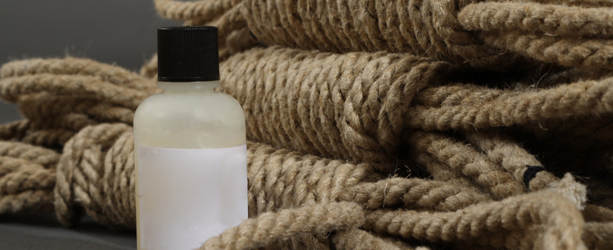Home | Product | Rope Preparation | Contact us

Natural fibre ropes: Natural fibre ropes are twisted, rather than braided, and are preferred by some simply due to the aesthetically pleasing marks left on the skin after being tied. Hemp, jute, and linen ropes are also very strong and with enough friction to hold any knots securely. Hemp: Hemp fibres come from various strains of the Cannabis sativa plant, and produce a strong, reasonably soft rope, with high enough friction to hold a knot securely. The rope can be fairly rough when untreated, but boiling, washing, and oiling as detailed below will result in a soft rope that is perfect for our purposes. Hemp rope has a very distinctive odour. Hemp tends to be the most common rope used for shibari in the West, as it is generally easier to obtain than Jute.. Jute: Jute fibres are produced from plants in the Corchorus genus. Jute rope has very similar properties to hemp rope, though it is a little lighter, smoother, and has a different smell. Jute rope is the most common rope used for shibari in Japan, but is relatively difficult to find in the West Linen: Linen fibres are produced from the flax plant, (usually Linum usitatissimum).The rope produced is very similar to hemp rope, but tends to be a little softer and 'fluffier', and lacks the distinctive smell of hemp. Linen ropes are not that commonly used for shibari, but are perfectly suitable for the task. Cotton: Cotton is also a natural fibre, but cotton rope is very different from the types of rope listed above. It can be made into twisted or braided rope, which is much softer on the skin than other natural fibre ropes, but it isn't as strong. The rope doesn't have as much friction as hemp rope, so knots are more likely to slip, and when under tension it has more of a stretch, meaning the knots can tighten and be more difficult to undo easily. Cotton rope can be used for the majority of shibari positions, but isn't recommended for suspension or partial suspension. Synthetic ropes: Nylon: Nylon is the most commonly used synthetic rope for shibari. It is very smooth and soft on the skin, it is strong, and easy to work with. However it has much less friction than natural fiber ropes, so extra knots or wraps are often required to hold the rope work firmly in place. One advantage it has over natural ropes is that it doesn't shrink when wet, so can be safely used in rope scenes involving water. Nylon rope is generally braided, although twisted rope can sometimes be found. It is easy to dye, so a wide variety of colours are available. Parachute cord: Parachute cord is very very strong, reasonably soft, and holds knots well, but is of too small a diameter to be useful for anything other than decorative shibari. Polypropylene rope is widely available, but is unsuitable for shibari, it is very hard and scratchy, and doesn't hold knots securely. Likewise, climbing ropes, while very strong, are generally too thick to use for shibari, and form bulky knots. Length: In Japan, all the ropes used are 7 metres long, and have knotted ends to allow additional ropes to be joined easily when the tie requires more rope. In the West, people often have a selection of lengths of rope, and pick the right length for the particular tie they are doing. Generally lengths used are 5 and 10 metres. The Japanese method of using shorter ropes and joining them means the shibari is slightly easier to perform, as you don't have very long trailing lengths of rope.
|